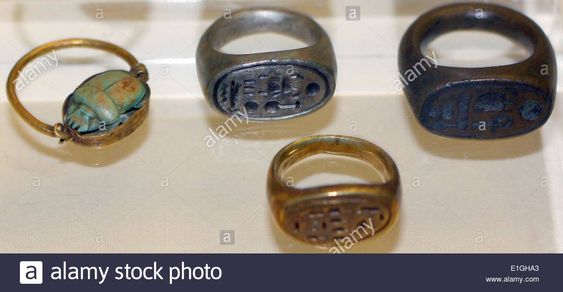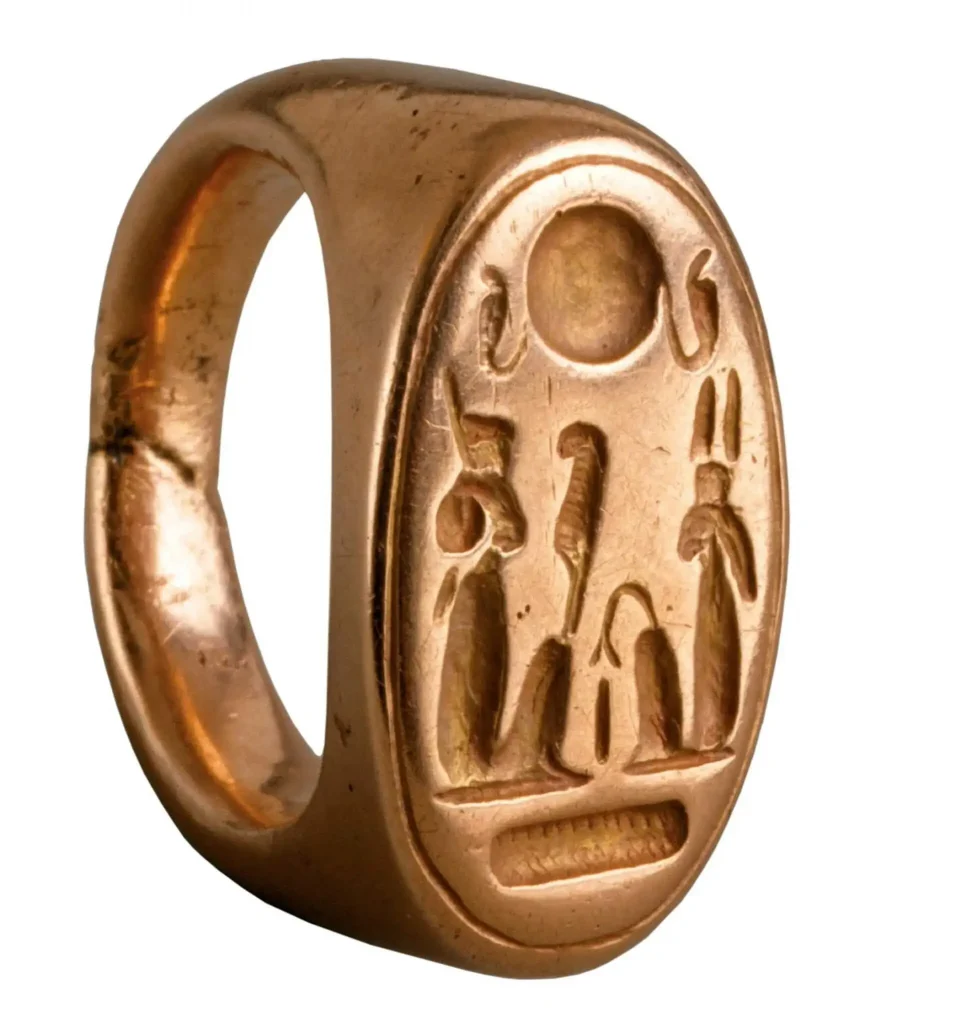Gold Finger Ring portraying King Akhenaten and Queen Nefertiti as Shu and Tefnut

In the hallowed halls of The Metropolitan Museum of Art lies a treasure that transcends time—a gold finger ring depicting the iconic figures of King Akhenaten and Queen Nefertiti as the deities Shu and Tefnut. Crafted during Egypt’s illustrious New Kingdom, specifically within the 18th Dynasty during the Amarna Period (circa 1353-1336 BC), this exquisite artifact offers a window into the religious and artistic fervor of ancient Egypt.

The ring, discovered in the archaeological site of Amarna, stands as a testament to the revolutionary reign of King Akhenaten and the enduring legacy of his queen, Nefertiti. Akhenaten, famously known for his religious reforms and the establishment of a monotheistic cult centered around the sun god Aten, sought to reshape Egyptian religious practices and beliefs. Nefertiti, his beloved queen and co-regent, played a pivotal role in his religious revolution, standing by his side as they ushered in a new era of worship and artistic expression.

At the heart of this magnificent ring is the depiction of Akhenaten and Nefertiti as the divine entities Shu and Tefnut. Shu, the god of air and sunlight, is often depicted as a man with outstretched arms supporting the sky. Tefnut, his counterpart and consort, is the goddess of moisture and rain, symbolizing the life-giving forces of nature. Together, they represent the cosmic forces of creation and the eternal cycle of life and death.
The choice to portray Akhenaten and Nefertiti as Shu and Tefnut is significant, reflecting the couple’s divine status and their role as intermediaries between the mortal realm and the divine. By aligning themselves with these powerful deities, Akhenaten and Nefertiti sought to legitimize their reign and assert their divine mandate to rule. Moreover, the depiction of the royal couple in such a sacred context underscores the religious fervor and piety of the Amarna Period.

The craftsmanship of the ring is equally impressive, showcasing the skill and artistry of ancient Egyptian goldsmiths. The delicate detailing of Akhenaten and Nefertiti’s features, the intricate hieroglyphic inscriptions, and the fine filigree work demonstrate a mastery of metalworking techniques that was unparalleled in the ancient world. Each element of the ring, from its symbolic imagery to its meticulous design, speaks to the reverence and devotion with which it was created.
The discovery of the ring in Amarna provides valuable insights into the artistic and religious practices of the period. Amarna, founded by Akhenaten as the capital of his new religious order, served as a center of innovation and experimentation in art and architecture. The city’s ruins have yielded a wealth of artifacts, including sculptures, pottery, and jewelry, each offering a glimpse into the cultural milieu of Akhenaten’s reign.

Today, the gold finger ring depicting Akhenaten and Nefertiti as Shu and Tefnut stands as a testament to the enduring legacy of ancient Egypt. Its presence in The Metropolitan Museum of Art serves as a reminder of the rich cultural heritage of the Nile Valley and the profound impact of Akhenaten’s religious reforms on Egyptian society. As visitors gaze upon this exquisite artifact, they are transported back in time to a world of gods and pharaohs, where art and religion intertwined to shape the course of history.
In conclusion, the gold finger ring of King Akhenaten and Queen Nefertiti is more than just a piece of jewelry—it is a symbol of power, devotion, and artistic achievement. Through its depiction of the royal couple as divine beings, it offers a glimpse into the religious beliefs and cultural values of ancient Egypt. As we marvel at its beauty and craftsmanship, we are reminded of the enduring legacy of one of the most fascinating periods in human history.